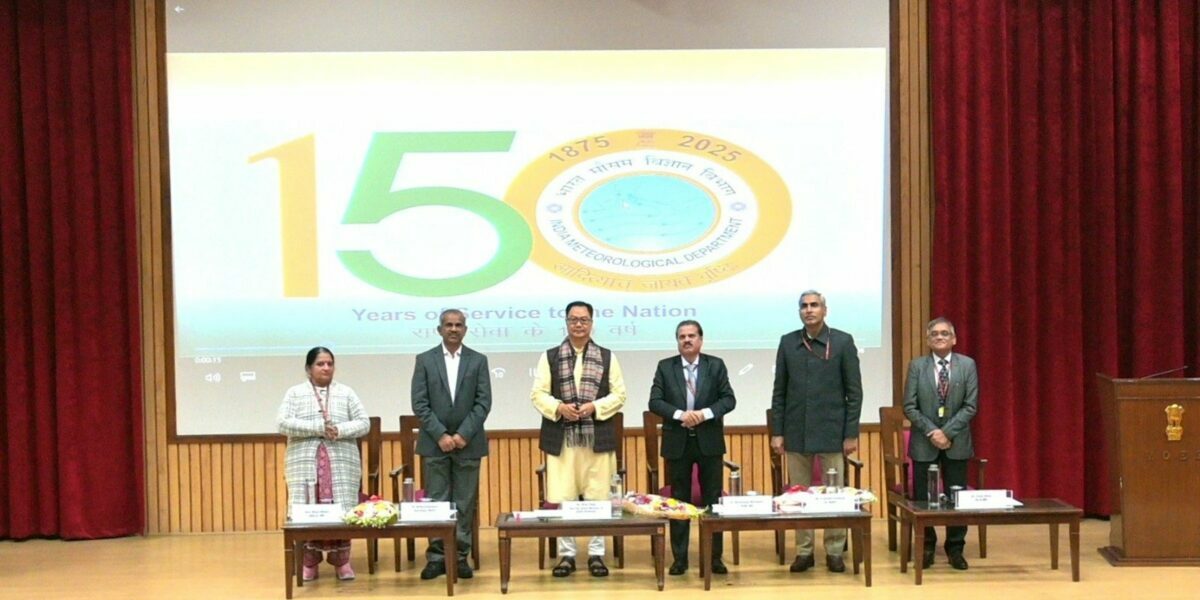The IMD and RMC Chennai had been at the centre of criticism as Southern Tamil Nadu saw torrential rains and subsequent floods.

Earth Sciences Minister Kiren Rijiju on Tuesday, 26 December said there was a need for more observatories to make better weather forecasts, including for the extreme rainfall events witnessed in Tamil Nadu.
Speaking to reporters in Delhi after unveiling the new logo of the India Meteorological Department (IMD), which enters its 150th anniversary year next month, Rijiju said Tamil Nadu receives heavy rainfall in December but there were no measures to prevent such heavy downpours.
“We only have to remain alert and take steps to prevent loss of lives,” the minister said.
Earth Sciences Secretary M Ravichandran said weather in the tropical regions was very difficult to forecast and none of the weather prediction models had anticipated the 90 cm rainfall witnessed in the Kayalpatnam municipality in the Thoothukudi district of Tamil Nadu last week.
The districts of Tirunelveli, Kanniyakumari, and Tenakasi also experienced heavy rainfall.
In all, 31 people lost their lives in rain-related incidents in the Tenkasi, Tirunelveli, Thoothukudi, and Kanniyakumari districts due to the unprecedented rainfall that occurred on 17 and 18 December.
Ravichandran said forecasting weather in tropical regions was difficult due to the dynamic changes it undergoes in comparison to weather in higher latitudes.
“It is not the Indian (forecasting) model we are looking at. We are looking at a suite of models from Europe, the US, India and Japan. No model could capture this type of process. This is because of the sea nearby and the sudden development,” he said.
Ravichandran said efforts were on to further improve weather forecasting by installing a new high-power computing system and incorporating more observations from different weather stations.
The IMD and RMC Chennai had been at the centre of criticism as southern Tamil Nadu saw torrential rains and subsequent floods.
The ruling DMK government claimed that the IMD failed to predict the accurate amount of rainfall in its forecast for the southern districts which faced “historic” rains last week, leading to severe flooding.
Indicating that the state was not sufficiently forewarned of what was coming, Tamil Nadu Chief Secretary Shiv Das Meena said on 19 December that the forecast of heavy rainfall by the IMD was “wrong” as extremely heavy rainfall was received in the affected districts within a short period of two days.
On the same day, Minister for Milk and Dairy Development Mano Thangaraj also raised questions on the performance of the IMD. The minister said it was time to also reflect on collective response to natural disasters.
In his letter to the Union government, Tamil Nadu Chief Minister MK Stalin also pointed to inaccuracies in predictions by IMD on the quantum of rains.
Observing that the forecast by the IMD turned out to be “wrong”, he said and added, “The IMD had predicted isolated to heavy, very heavy to extreme rainfall may occur in one or two places. This is what the forecast said. But Kayalpattinam (a municipality in the Thoothukudi district) received 115 cm rainfall in two days.”
Taking to X on the issue, Mano Thangaraj, stated, “…it is crucial to reflect on both the performance of our Meteorological Department and our collective response to such natural disasters.”
One of the key issues Thangaraj identified is the time discrepancy in the weather alerts. “The gap between the issuance of the Red Alert and the actual flooding was much shorter than what could have been ideal as some Western models exhibit in those countries,” he wrote.
He stated that the critical delay in the forecasting system underscored the need for more immediate and accurate weather alerts.
Demanding for better facilities, the minister said, “Upgrading our forecasting models and communication systems is essential. We must be better equipped to predict and manage such calamities.”
Discrediting the claims of the state government, Sitharaman said the RMC in Chennai had ultra-modern equipment including three dopplers and had forecast on 12 December itself that there would be heavy rainfall in the Tenkasi, Kanniyakumari, Tirunelveli, and Thoothukudi on 16 and 17 December.
She added that the Union government always issued the forecast five days in advance, besides providing nowcasts three hours in advance.
The minister further said the RMC in Chennai was a state-of-the-art facility and it had forecast heavy rains in the southern state well in advance.
Sitharaman said this in response to the charge by Chief Minister MK Stalin that the IMD had failed to issue timely warnings about the extreme rainfall that battered Tuticorin, Kanyakumari, Tirunelveli, and Tenkasi districts.
Addressing reporters on the measures taken by the Centre in the wake of heavy rainfall in south Tamil Nadu, Sitharaman said the RMC in Chennai has three dopplers that issued updates on weather conditions every three hours.
“It is the state-of-the-art meteorological centre located in Chennai. Forecasts (by this centre) are normally done in a dynamic way, that is every five days in advance. Every day there is a forecast but it warns you five days in advance about adverse weather conditions,” she said.
India Meteorological Department was set up on 15 January 1875 and is set to enter its 150th anniversary year next month.
The weather office, which has its beginnings as a port warning centre in Kolkata, has grown exponentially over the past 150 years.
Ravichandran also urged the IMD to step up outreach efforts and inform the people what was possible to forecast and what was not.
Citing examples, Ravichandran said it was not possible to issue lightning forecasts a week in advance or to predict earthquakes.
(With PTI inputs)

May 13, 2024

May 12, 2024

May 07, 2024

May 06, 2024

May 05, 2024

May 05, 2024